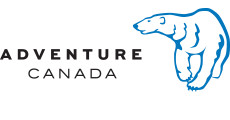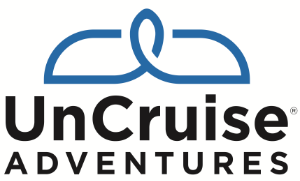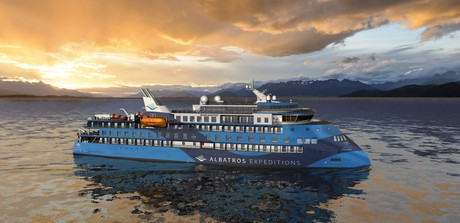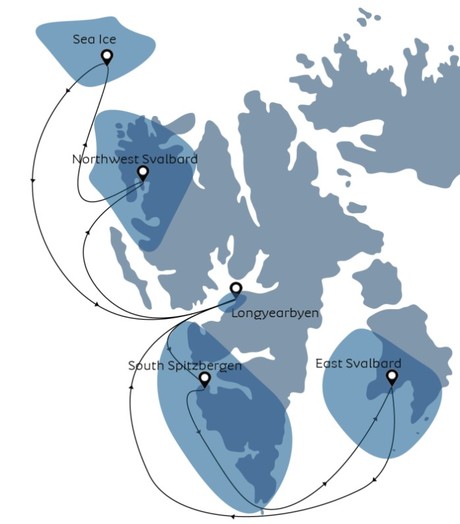Svalbard in Depth - Land, Sea and Ice Expedition
Join a new and exciting voyage onboard Ocean Albatros, exploring Svalbard in depth. This expedition departs from Longyearbyen, the world's northernmost town, before heading towards the deep fjords and rolling mountains of Southern Svalbard. Experience the raw beauty of nature in this high Arctic paradise, which is kept warmer than other lands at the same latitude by the last gasp of the Gulf Stream. This region includes some of Svalbard's most spectacular scenery and greatest biodiversity with a variety of habitats, from green tundra meadows, to glassy fjords and precipitous mountains. Spot the endemic Svalbard reindeer, puffins and maybe even the elusive yet charismatic Arctic fox in this chilly utopia.
From the southern region of Svalbard, Ocean Albatros will return to Longyearbyen, allowing guests to explore this fascinating little town. Rich in history and local culture, Longyearbyen is one of the most fascinating towns in the world, and offers a huge amount to the discerning visitor, from excellent museums, galleries, dining and shopping through to challenging but rewarding hiking and other outdoor activities.
From Longyearbyen, Ocean Albatros will journey via the remote lands of the Northwest Spitzbergen National Park to the northernmost region of planet Earth - the Arctic Ocean. Spending two full days exploring the frozen wilderness of the pack ice, guests can experience one of Earth's most remote and beautiful regions. The nutrient-rich waters of the northern Barents Sea nourish a plethora of wildlife, much of which can be found in the Arctic pack ice and nowhere else - including the King of the Arctic, the polar bear. Our unique ice-strengthened vessel is the ideal platform from which to explore this icy seascape, offering the best possible views over the ever-shifting ice which stretches from Svalbard to Siberia and Alaska, far beyond the North Pole. Navigating these ethereal white ice floes is a challenge even for even the most skilled seafarers, however our talented Captain, Bridge Team and Expedition Leader will artfully exploit the leads and cracks in the ice, endevouring to explore as much of this unearthly realm as possible. From the ice edge, your vessel will return to Northwest Spitzbergen before concluding in Longyearbyen.
Embark on the adventure of lifetime aboard Ocean Albatros for a truly unique take on the traditional Svalbard expedition cruise.
|
Book now |
Category F Stateroom - Triple Stateroom (Porthole)

Category D Stateroom - Albatros Stateroom (Porthole)

Category E Stateroom - French Balcony Stateroom

Category C Stateroom - Balcony Stateroom

Category G Stateroom - Single Stateroom (Porthole)

Category B Suite - Balcony Suite
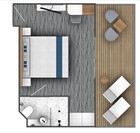
Category A Suite - Junior Suite
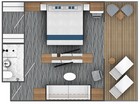
Premium Suite - Freydis Suite
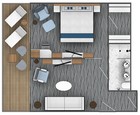
Family Suite - Brynhilde Suite

Vessel Type: Luxury Expedition
Passenger Capacity: 169 (95 cabins)
Length: 104.4 m
Built: 2022
The Ocean Albatros, sistership to the Ocean Victory, will join the fleet of Albatros Expeditions in November 2022.
The Ocean Albatros will be deployed to a large selection of expedition cruise destinations, Antarctica, the Arctic, any various exciting new destinations in between.
With a total of 95 comfortable staterooms and suites, all with unobstructed sea view, most with their own balcony, the Ocean Albatros will definitely become one of the most popular expedition cruise vessels in the world. Like it's sistership the Ocean Victory it offers two restaurants, a wellness area, an Albatros Nordic Bar, an open deck dining facility, a modern lecture lounge, and other state-of-the-art amenities. The vessel will have more than a 50% lower carbon footprint than traditional expedition vessels and be one of the most environmentally friendly, implementing the Green Initiative Program, ensuring both absolute comfort and sustainability for our guests. Unlike the Ocean Victory, the Ocean Albatros will also offer a unique panorama sauna, and a total of 12 dedicated solo travel cabins without a single-supplement.
BRIDGE
Due to its important role as a control center for all nautical and technical processes, the ship's bridge is a vital, sensitive place. Therefore, the bridge may not be accessible to the public at all times. Conditions permitting, we will be happy to welcome you into the bridge for a visit. Guests must be accompanied by the master or our expedition leader.
STATEROOM SERVICE
Your stateroom is serviced daily. We provide a turn-down service. We provide meal to room only for serious cases of guest being sick. Our suites will have VIP services.
ZODIAC LANDINGS
One feature of our expedition cruises includes landings and excursions aboard Ocean Albatros's fleet of 18 inflatable, motorized rubber "Zodiac" boats. The Zodiac brand has earned a well-deserved reputation as the sturdiest and safest small watercraft available. These boats have a low draft and great stability. Zodiacs are constructed for professional use and are outfitted with a top-quality outboard engine, yet their design minimally impacts the environment.
The Zodiacs are designed to provide unrestricted access to the world’s last great frontier. Their versatility enables us to make landfall on remote shores, cruise along awe-inspiring coastlines and share breathtakingly close encounters with whales, seals, penguins, seabirds and more. We will come within arm’s reach of icebergs and set foot on land discovered by pioneering explorers just over a century ago.
Your safety and comfort are our #1 priority, and your expedition leader will carefully plan for as many Zodiac excursions as possible, dependent upon the local weather and prevailing conditions. In each case, the expedition leader makes the final decision if the landing is possible or not. Safety regulations apply on landings. All guests receive a mandatory instruction of the safety guidelines. Life jackets are mandatory to wear.
Please note, we highly recommend the use of waterproof bags in order to protect your personal camera or binoculars, as both hands must be free of everything during boarding. Participation is fairly easy and comfortable for able-bodied guests but can be more challenging for those with physical handicaps.
GRATUITIES
Following international standards in the service industry, it is customary to leave gratuity for the ship’s crew at the end of the voyage. All gratuities will be divided among the crew. Typically, a recommended amount is approximately 13.5 USD per person per day. Gratuity is, of course, not required and any gratuity payments are voluntary.
DRESS CODE
The dress code on board is casual. Ties, jackets and evening dresses you may leave at home. It is rather more important to wear the right clothes in order to adapt to the different weather conditions. We recommend comfortable, breathable, waterproof and windproof clothing. Also, you should have a pair of gloves, thermal underwear and sturdy footwear in your luggage. For the captains and farewell cocktail, we recommend a smart casual dress style.
INTERNET / PHONE
Keep in mind, we will be cruising in a very remote region of the world. Where accessible, internet access is available for an extra charge. Mobile phone reception may be possible in select regions along our route. For further details please contact your mobile phone operator. Prices can be found in the information folder in your state room. Please ensure that your ‘Data Roaming’ function is switched off.
RECEPTION
The daily office hours of the board reception are from 06:00 until 23:00.
ALBATROS OCEAN SHOP
The selection of items available for purchase varies by ship, and may include a range of warm and practical clothing, as well as souvenirs, local arts and postcards at reasonable prices. A small selection of soap, toothpaste and other personal effects are also sold.
HEALTH / MEDICAL EMERGENCY
Each of our vessels has a small medical facility equipped with the necessary equipment and medicine to handle small emergencies. The infirmary is always staffed by a professionally licensed, English-speaking physician and nurse. Should a serious incident occur, the nearest hospital will be contacted. All guests must have personal travel/health insurance.
Although we do not have an official requirement regarding personal fitness, you should be able to move on board and ashore without the help of others. Please be aware that the ship does not provide wheelchair accessible state rooms.
Due to safety reasons a cruise is only possible for pregnant women until the 24th week of pregnancy. The state of pregnancy must be presented by a medical certificate.
PHYSICAL DISABILITIES / WHEELCHAIR ACCESSIBILITY
Guests with physical disabilities are recommended to travel with an accompanying person. The processes on board should be handled without external help. The gangway can be – depending on the individual disability – a challenge. The angle of inclination of the gangway varies due to tide and different circumstances in the respective port. Please note that the guest’s participation in shore excursions as well as the (dis-)embarkation by Zodiac can be denied by the expedition leader due to security reasons. The instructions of the expedition leader must be followed. The ship is not suitable for wheelchairs.
SEASICKNESS / STABILISATORS
The ship is equipped with stabilizers in order to reduce the ship’s roll. However, these expeditions are hosted in remote regions, and it is possible to periodically encounter changing environments and climate patterns, including rough seas and large swells. Seasickness patches (Scopoderm or similar) work solely or in part to help cure nausea for most people. These medicines can cause sleepiness. If you are prone to motion sickness, consult with your doctor prior to departure to help ensure your comfort while travelling.
SPECIAL DIETARY REQUESTS
All meals on board the vessel is chef-prepared. If you have special dietary requirements (food allergies, intolerances, health conditions or religious preferences), please inform us as early as possible - ideally, no later than 2 weeks before departure. In order to ensure efficient service, please re-confirm your requirements with the crew upon boarding the ship.
LAUNDRY
If you wish to have some laundry done while aboard the ship, laundry service is available for an additional fee.












Inclusions
• Voyage in selected cabin category
• Accommodation in shared inside or outside cabins as booked
• English speaking expedition team
• Shore landings by zodiac
• Information briefings and lectures held on board by expedition team
• All meals while on board
• Welcome and farewell cocktails
• Free tea and coffee on board
• Complimentary use of boots for shore landings
• Digital journal link after voyage (Includes voyage log, gallery, species list and more)
• Port Fees, taxes and AECO fees and tariffs
• Fights: Oslo-Longyearbyen-Oslo
• Local transport in Longyearbyen on days 1 and 11
Exclusions
• Flights to/from departure port unless specified in itinerary
• Hotel accommodations unless specified in itinerary
• Travel Insurance
• Cancellation insurance
• Additional excursions and activities not mentioned in itinerary
• Meals when not on board the ship
• Beverages other than tea/coffee and water
• Gratuities for crew (recommended USD$14.00 per passenger per day)
• Any items of a personal nature
Highlights
• Sail Aboard One of the World’s Only Ice-class• Expedition Ships Built to Withstand Arctic Waters and Pack Ice
• Visit the Spectacular Fjord Systems of
• Hornsund and Bellsund
• Fascinating Bird Life and History at Alkhjornet
• Walrus Colonies of Kapp Lee and Anreetangen
• Bird Colonies of Edgeøya
• Former Whaling Station at Smeerensburg and Ytre Norskøya
• Spend time exploring the Arctic ice pack
Our Associates Include
